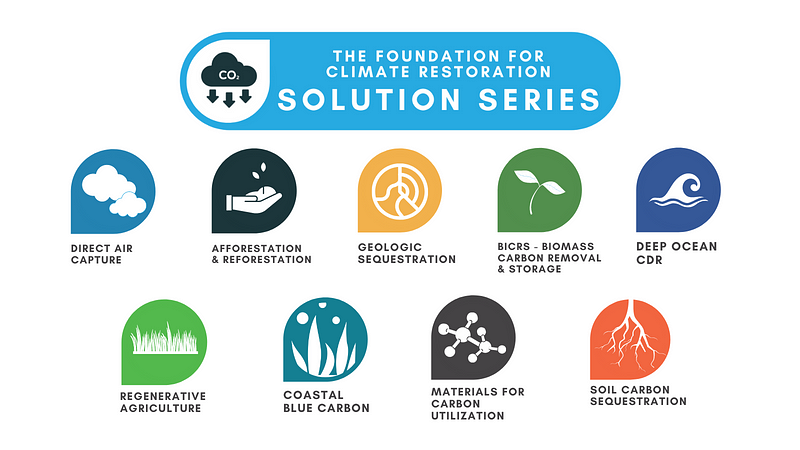Solution Series: Forest Carbon Practices

At F4CR, we’re often asked, “What are the solutions that can restore the climate?” In the coming months, we will attempt to answer this question (and more!) as they relate to nine categories of CDR solutions. In month 2 of our Solution Series, we examine the potential of forest carbon practices to contribute to climate restoration. Our recently released forest carbon white paper looks in greater detail at forest carbon practices’ climate restoration potential in terms of durability, financeability, scalability, and equity. This blog post gives a brief overview of some key points.
What are forest carbon practices?
Forest carbon practices encompass afforestation, reforestation, improved forest management, and sustainable forest management practices. These practices each take a slightly different approach to increasing the amount of CO2 absorbed by and stored in forests.
Afforestation is the process by which trees are planted in an area that has not been inhabited by trees for at least 50 years.
Reforestation involves replanting trees in an area that recently housed trees.
Improved forest management refers to the active modification of forestry practices to promote greater forest biomass and carbon storage.
Sustainable forest management aims to maintain and enhance the economic, social and environmental values of all forests for the benefit of present and future generations.
Can forest carbon practices restore the climate?
Forest carbon practices vary in their durability, financeability, scalability, and equity. These practices undoubtedly have a role to play in climate restoration, but their capacity to shoulder a considerable share of the carbon burden depends on many variables.
Durability: Biological CDR approaches like forest carbon practices work to both absorb carbon and store it. However, the durability of storage depends largely on the way forests are managed. For example, improved forest management can include regulating areas where logging occurs, protecting some areas from logging, and incorporating silvicultural practices to improve growth. Improved and sustainable forest management can also increase forests’ resilience to climate change impacts like wildfires and pests that can cause widespread tree death and release of carbon. If all goes well, trees can durably store carbon, but it is less certain and harder to measure than many other approaches.
Financeability: Forest carbon practices are relatively inexpensive, and more funding already exists for these initiatives than for most other CDR approaches. Some forest carbon practices can be free to implement, like allowing forests to regenerate naturally. Others can cost upwards of $50/ton of CO2, like afforestation in areas where significant land preparation is needed (e.g., draining a bog to plant trees).
Scalability: One of the key constraints in scaling forest carbon practices is the limited supply of land. Not all land is suitable for forests, much of our land area is needed for agriculture, and many areas store more carbon through existing ecosystems (e.g., peat bogs) than they would if they were converted into forests. Even if all available and appropriate land were converted to forests, it’s unlikely that forests could reach 10 Gt CO2 removal per year.
Equity: Forest carbon practices can be implemented equitably, but doing so requires careful consideration of risks and participation of potentially impacted communities. In particular, impacted communities should be at the decision-making table when new projects are being planned, and special care should be taken to ensure that benefits of forests — like creating local jobs and preventing erosion — are distributed equitably. When possible, land for forests should be returned to the Indigenous communities who originally held them, as they have been shown to outperform government agencies and conservation organizations in supporting biodiversity, sequestering carbon, and generating other ecological benefits on their land.
Interested in learning more about forest carbon practices? Download our Forest Carbon White Paper and register for our forest carbon expert panel on Tuesday, May 31 at 1:00 pm Pacific.